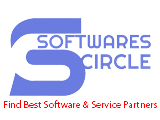jQuery is a JavaScript library that simplifies the process of working with the Document Object Model (DOM) and provides a wide range of tools for web developers. It was first released in 2006 by John Resig and has since become one of the most widely used JavaScript libraries.
jQuery makes it easier to select and manipulate HTML elements, create animations and effects, handle events, and perform AJAX requests. It also provides a range of utility functions that simplify common programming tasks.
One of the key features of jQuery is its ability to work across different browsers and platforms, ensuring consistent behavior and performance. It also provides a range of plugins and extensions that extend its functionality.
Here are 10 best practices for building an API using jQuery:
Use proper URL structure
Ensure that your API endpoints are well-structured and follow a consistent pattern.
Follow RESTful principles
RESTful APIs are easy to use, maintain, and understand. Follow RESTful principles to create a consistent and predictable API interface.
Keep the API simple
A simple API is easy to use and understand. Keep the API simple by limiting the number of parameters, endpoints, and responses.
Use HTTP response codes
Use HTTP response codes to provide clear feedback to the client about the status of their requests. HTTP response codes are standardized and widely understood.
Connect with SoftwaresCircle and Increase Your Business Online Visibility to Millions of Users
Get ListedProvide documentation
Documentation is crucial for developers to understand how to use your API. Provide clear and concise documentation that outlines how to make requests and what responses to expect.
Use versioning
As your API evolves, you may need to make changes that break compatibility with earlier versions. Use versioning to ensure that clients can continue to use earlier versions of your API.
Use authentication and authorization
Protect your API from unauthorized access by implementing authentication and authorization. This will prevent malicious users from accessing or modifying data.
Use caching
Caching can significantly improve API performance by reducing the number of requests made to the server. Use caching to store frequently accessed data and responses.
Handle errors gracefully
Errors are a normal part of API usage. Handle errors gracefully by providing clear error messages and HTTP response codes.
Test your API
Test your API thoroughly to ensure that it works as expected. Use automated testing tools to catch issues early and reduce the risk of introducing bugs into your API.
Overall, jQuery is a powerful tool for web developers that simplifies the process of creating dynamic and interactive web applications. Its popularity and widespread adoption make it a valuable skill for any web developer to have.
